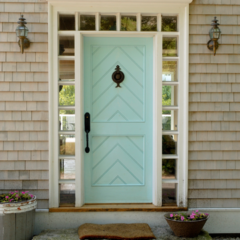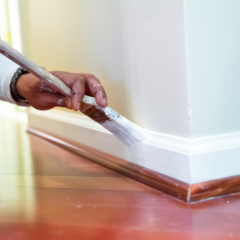 The appearance of paint colors on a color chart is not the same as the impressions on the walls. People often choose their paint color from the chart. In the end, they discover that it looks entirely different after painting.
The appearance of paint colors on a color chart is not the same as the impressions on the walls. People often choose their paint color from the chart. In the end, they discover that it looks entirely different after painting.
Paint colors may not appear the way you want them to because of the following:
Lighting: Paint stores often use bright lighting so that you will appreciate the color. The lighting in the paint shop may not be similar to what you have at home. For that reason, the appearance will differ. Also, as Leenan Properties adds, the paint color may vary from room to room, depending on the illumination in each area.
Background color: On the color chart, the colors are on a paper strip. As a result, the background will offset the color. However, when you paint it on the walls, there is no background color to counteract it. You only get to see the actual picture of the color after painting it.
Resolution: If the color chart was on a phone or computer screen, then the screen’s resolution will determine how the color looks. The same color will appear differently on two screens that have different configurations or graphics capacities. Also, when you look at one color from different angles, you observe variable manifestations.
Flooring: The appearance of the paints on the wall is never in isolation. The floor’s color affects it. For this reason, it is necessary to ensure that the paint color blends with your flooring to produce the appearance you desire.
So how do you ensure that the paint color you choose will turn out as you expect? You can achieve this by testing the paint color before committing. The methods you use in assessing your paint color matter too. If you do it the wrong way, you will not achieve the appropriate result.

Ways to test paint colors before committing
-
Consider other details in the room
Always ensure that you consider other things in the room before you choose the paint color. It is easier to select paint that will match the details in the room than to pick the elements that will fit the paint color. Things you should evaluate include carpets, floors, lights, furniture, and appliances.
-
Do not test the color on boards
Paints appear different when you try them on boards and walls. Several homeowners and painters make the mistake of testing paint colors on boards. It is essential to note that boards possess a different saturation rate and texture from walls.
-
Test your paints on the walls
We always recommend that you test your paint on the walls you intend to use. That is the only way you can appreciate the outcome. You can paint all the options side by side on the walls. It is necessary to do this if you are yet to decide on the color. However, ensure that you keep some space between the test samples.
Use at least a 1 foot by 1 foot section for each strip of color. It is preferable to make the sample strip up to 2 feet by 2 feet if you want a better result. Although some people may see this method as messy, it offers a better picture than using boards.
-
Use a primer when testing for bright or saturated colors
Without a primer, bright colors will not read better. Also, the result will not tally with the final appearance on the walls. But if you use a primer, the paint will read accurately, and the result will be consistent with the outcome on the wall.
-
Apply two coats
It is essential to note that the existing color on your walls will affect the sample’s appearance. If the existing wall is bright, your sample color will appear darker. But if the wall is shady, your sample color will look light. For this reason, we recommend that you apply two coats. Doing this will give you the actual saturation level and help you appreciate how the final painting will appear.
-
Paint on many walls
Different walls in the room receive variable levels of lighting. As a result, the colors will appear differently on each wall. That is why we recommend you test the samples on different walls that receive variable levels of lighting. Test on both bright and dark walls.
-
Consider the room’s lighting
The type of lighting determines the appearance of the color. We recommend that you test your sample with both natural light and artificial light. Also, you should assess your paint color under yellow-hued and fluorescent lights.
The bottom line
Before you purchase buckets of paints for your property, endeavor to test the color on your walls. Doing this will prevent you from spending money on paint colors that will not appear beautiful on your house.













